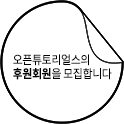LESS를 사용하면 캐스캐이딩 방식으로 결합하는 방식 대신에 중첩하는 방식을 사용할 수 있습니다. CSS가 다음과 같은 상황을 살펴 보죠:
#header { color: black; }
#header .navigation {
font-size: 12px;
}
#header .logo {
width: 300px;
}
#header .logo:hover {
text-decoration: none;
}
LESS를 사용하면 다음처럼 쓸 수도 있습니다.
#header {
color: black;
.navigation {
font-size: 12px;
}
.logo {
width: 300px;
&:hover { text-decoration: none }
}
}
아니면 이렇게 쓸 수도 있습니다.
#header { color: black;
.navigation { font-size: 12px }
.logo { width: 300px;
&:hover { text-decoration: none }
}
}
The resulting code is more concise, and mimics the structure of your DOM tree.
Notice the & combinator—it’s used when you want a nested selector to be concatenated to its parent selector, instead of acting as a descendant. This is especially important for pseudo-classes like :hover and :focus.
예를들어
.bordered {
&.float {
float: left;
}
.top {
margin: 5px;
}
}
다음의 결과가 나옵니다.
.bordered.float {
float: left;
}
.bordered .top {
margin: 5px;
}



